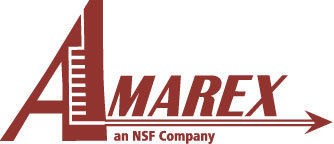- Home
- News and Resources
- Resources
- Why Real-Time SDTM Conversion Is the Future of Clinical Data Management
Why Real-Time SDTM Conversion Is the Future of Clinical Data Management
In the evolving landscape of clinical research, data is more than just a byproduct of a study—it’s the foundation of regulatory approval, scientific discovery, and patient impact. Yet, many sponsors still rely on outdated approaches to data standardization, particularly when it comes to the Study Data Tabulation Model (SDTM).
Traditionally, SDTM conversion has been treated as a final step—something to be tackled after the last patient visit. But this reactive model introduces unnecessary delays, increases risk, and often results in a scramble to meet submission deadlines.
At Amarex Clinical Research, we believe there’s a better way: real-time SDTM conversion.
The Problem with the Traditional SDTM Approach
Waiting until the end of a study to begin SDTM conversion creates several challenges:
- Delayed Issue Detection: Data inconsistencies and mapping errors often go unnoticed until it’s too late.
- Compressed Timelines: Finalizing datasets, metadata, and documentation under pressure increases the risk of mistakes.
- Limited Interim Analysis: Without standardized data, interim reviews are slower and less reliable.
- Siloed Teams: Clinical, data management, and biostatistics teams often work in parallel rather than in sync.
These inefficiencies can delay regulatory submissions, increase costs, and compromise data quality.
What Is Real-Time SDTM Conversion?
Real-time SDTM conversion involves formatting and validating clinical trial data into SDTM structure as it is collected, rather than waiting until the study concludes. This proactive approach allows sponsors to maintain data integrity, streamline operations, and stay ahead of regulatory requirements.
At Amarex, our real-time SDTM process includes:
- Ongoing Mapping Updates: As new data is collected, mapping specifications are updated to reflect changes in domains, fields, and controlled terminology.
- Live Annotated CRFs: Visual annotations are maintained throughout the study to ensure traceability and transparency.
- Continuous Validation: Using tools like Pinnacle 21 Community, we validate datasets and Define.xml files in real time.
- Collaborative QC: Our dual programming and quality control processes ensure accuracy and alignment across teams.
The Strategic Benefits of Real-Time SDTM
- Early Issue Detection: Catch data inconsistencies, missing fields, or mapping errors early—before they become submission blockers.
- Faster Interim Analyses: With standardized data available throughout the study, sponsors can perform interim analyses more quickly and confidently.
- Reduced Submission Delays: By preparing datasets and documentation in parallel with data collection, final submission packages are ready sooner.
- Improved Cross-Functional Collaboration: Real-time SDTM fosters alignment between clinical operations, data management, and biostatistics—reducing rework and improving efficiency.
- Regulatory Confidence: With validated, audit-ready datasets available at any point in the study, sponsors are better prepared for inspections and submissions.
A Smarter Path Forward
Real-time SDTM conversion isn’t just a technical enhancement—it’s a strategic shift in how clinical data is managed. It empowers sponsors to be proactive, agile, and compliant in an increasingly complex regulatory environment.
At Amarex, we’ve built our SDTM services around this forward-thinking model. With deep regulatory expertise, proprietary processes, and a commitment to quality, we help sponsors turn raw data into regulatory-ready insights—faster and more effectively than ever before.
The future of clinical data management is real-time. Let’s build it together.
